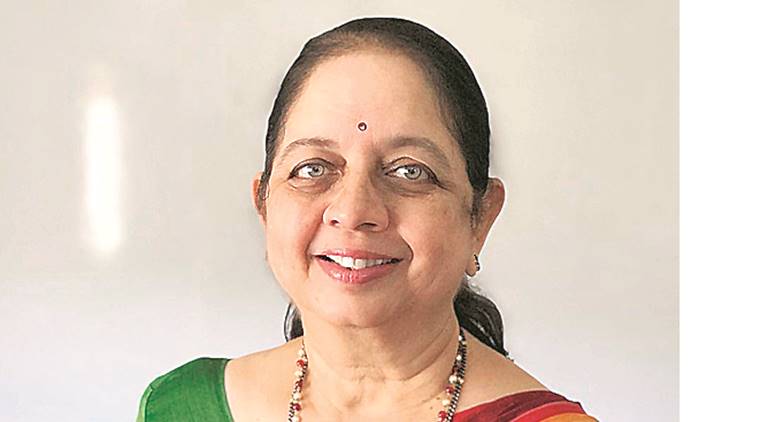
Heritage India has organised a lecture series on the Ramayana as part of its effort to spread awareness about great works of literature in India. Its series on the Ramayana follows one on the Mahabharata, and coming up in the next few months are lectures by eminent scholars on Kalidasa and the Vedas, among others. MANJUSHA GOKHALE, an eminent academic and scholar who was honoured with the Peshwe Moropant Pingle lifetime achievement award by the Shivaji Jnanapeeth on June 15, speaks to The Indian Express about unwinding the thread of political intrigue, strategy and ambition in the Ramayana.
Does the Ramayana treat Rama as a god or a normal, political human being?
Valmiki Ramayana treats Rama as a person and an ideal king. Only in the first and last chapters is Rama said to be an incarnation of Vishnu, but experts say these chapters are late additions to the original Valmiki Ramayana. After Valmiki, all versions of the Ramayana emerged from the religious point of view and devotion is the main theme. We have a habit of looking at the Ramayana as a religious book or poetic composition. But many Sanskritists, historians and Indologists have worked on the history and culture of ancient India reflected in Ramayana.
There are many Ramayanas. Which do you consider the foremost?
Valmiki was the first poet who composed the Ramayana. Prior to that, there were oral traditions telling the story of Rama. Valmiki must have collected the oral material and composed the epic. According to Indologists, the writing of the Ramayana must have been commenced in 5 BC, but the edition we call Valmiki Ramayana was completed in approximately 2 or 3 AD. But the Ramayana has been so popular everywhere in India that in every regional language, many poets — from ancient times to the modern era — have been composing their own Ramayanas. We have Tulsi Ramayana, Bhavartha Ramayana and Kamba Ramayana, among others. As a literary composition, Valmiki Ramayana is the foremost.
One of the reasons for Rama’s ‘vanavasa’ was the palace intrigue of Rama’s stepmother Keikeyi. How do you interpret the politics behind his exile?
Dasharatha wanted to coronate Rama but Keikeyi insisted that the kingdom should go to her son, Bharata.
Basically, Valmiki Ramayana says that when Dasharatha married Keikeyi, her father had said, ‘My condition is this. You can marry my daughter but you should give the kingdom to her son’. It was a custom in some regions in India that was called ‘streeshulka’, which means that the bridegroom should give something to the father of the bride.
It is possible that Kekeya, a kingdom that was home to Keikeyi, had some traits of a matriarchal system that stipulated that the kingdom would go to the son of the daughter. Bharata used to stay at his maternal uncle’s home. Dasharatha wanted to give the kingdom to Rama, as he was the eldest son, the best among the four and popular. But, Manthara was from Kekeya and had been the maid of Keikeyi since childhood. She was naturally loyal to Kekaya and could not tolerate Rama being given the kingdom. She saw it as injustice to Kekeya.
Perhaps it was a necessity that Rama, instead of sitting on the throne, should go to Dandakaranya, observe and study the policies of rakshasas and oppose them wherever and whenever he could.
What can we glean about the sociopolitical status of monkeys, who represent the common soldiers of Rama’s army, from the Ramayana?
Kishkindha was a city where the vanaras ruled. Vanara does not mean only monkey. Valmiki makes a difference between ‘pashuvanara’, meaning monkey, and ‘naravanara’, which is humans who look like monkeys. Vanaras were a tribe of foresters. They were not primitive. They were civilised — perhaps a little less compared to the Aryans in the North… Ravana made friends with Vali, their emperor… If you want war with a strong enemy, you must have strong friends with you. Even Rama made a treaty with Sugreeva for the same reason.
He sent Hanuman to Lanka, where he accomplished a number of things. He confirmed that Sita was present there. He also wanted to go to Ravana and, therefore, did not hide himself. He destroyed Lanka, and killed many powerful rakshasas. Ultimately, he let the army of Ravana imprison him.
As an ambassador, he told Ravana how Rama was powerful and could defeat him… Ravana did not listen but must have felt threatened. If one vanara could destroy Lanka, what could the entire army of vanaras do?
Rama has become an important figure in present electoral politics. Can the Ramayana be considered a historical text and be seen as historical data?
The Ramayana is, first and foremost, known as a poetic composition by a human being. It is a kavya, no doubt about that, but the Ramayana contains many things that help us develop the history of ancient India, from cultural and geographical aspects to linguistic and political aspects. I don’t say the Ramayana is a piece of historical writing but it still is a milestone in the history of India. I also wouldn’t say that it is entirely fiction.
Gokhale’s lecture will be held on June 20 at Firodia Hostel, BMCC Road.